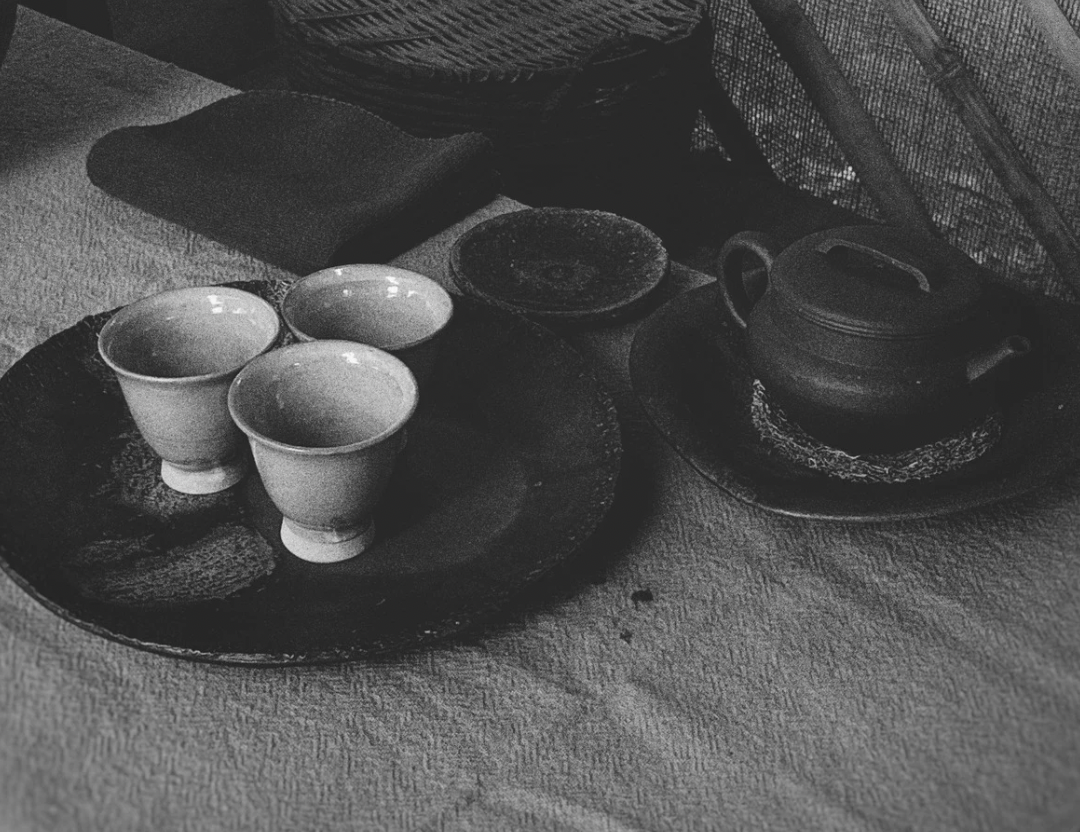Gōng Fu Chá 工夫茶 – Skilful Tea
Cháozhōu 潮州 Style
The Cháozhōu 潮州 (or Teochew in a local romanisation) gōng fu chá 功夫茶 brewing tradition originated from the Cháoshàn 潮汕 area in the Guǎngdōng 廣東 province of China, home of the Phoenix Mountain (Fènghuáng shān 鳳凰山) and dān cōng 单枞 oolongs. This several hundred-year-old way of preparing tea was originally developed to make low-grade teas more palatable through skillful brewing. It traditionally relies on locally produced teas (namely dān cōng 单枞) and teapots[1], using only three cups[2] that are arranged to form the character pǐn 品 (taste). This character is said to symbolize in abbreviated form the word pǐndé 品德, which means ‘virtuous character’ or ‘morality’. Three brews are served[3], with the tea being directly poured into the cups in a circular fashion (known as ‘Lord Guān patrols the city’ / Guāngōng xún chéng 關公巡城[4]). The last drops coming from the teapot, which contains the strongest liquor, are then distributed evenly by shaking it downwardly (known as ‘Hán Xìn selects the troops’ / Hán Xìn diǎn bīng 韓信點兵[5]). Once the tea is served and as a sign of respect, the first cup is offered to the oldest guest among the three that are present, with the last one given to the youngest person[6]. When drinking from the cup, tea is traditionally drunk in three sips; the first one to appreciate the aroma and moisten the lips; the second one to appreciate the flavor; the third one to keep a final aftertaste. Nowadays, Cháozhōu 潮州市 style gōng fu chá 功夫茶 expresses itself through a diversity of procedural variations and is used to brew other types of unrolled oolongs such as yán chá 岩茶 (rock tea) from the Wǔyí mountains 武夷山.
- Ideal for: People already familiar with tea or looking to further explore the complexity of rock (yán chá 岩茶) and phoenix oolong teas (dān cōng 单枞)
- Teas shared: Organic, naturally grown, artisan Taiwanese teas, Chinese yán chá 岩茶, dān cōng 单枞 (will be tailored based on the event and availability)
- Number of guests: 2 – 3
- Duration: 1 h
- Languages: English, French
- Location: Malaysia (Penang: Pop & Chee)
Let’s collaborate together
If you are looking to book Le cerf-volant‘s tailored tea organoleptic experiences and rituals for your public or private event intended for the following, please get in touch with Raphaël directly:
- retreat centre ;
- wellness centre ;
- meditation circle ;
- yoga studio ;
- hotel / resort / spa ;
- creative market ;
- art gallery ;
- artist residency ;
- cultural or music festival ;
- botanical garden ;
- permaculture community ;
- other corporate entity ;

